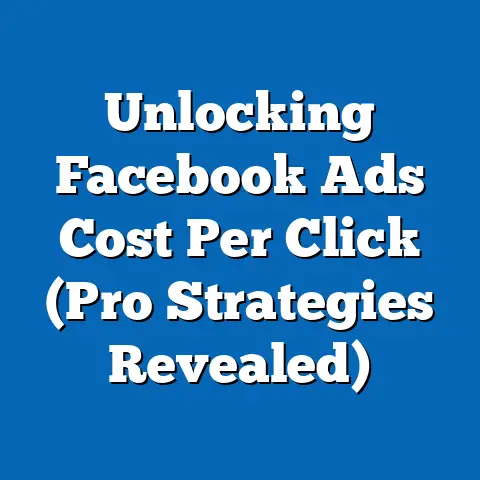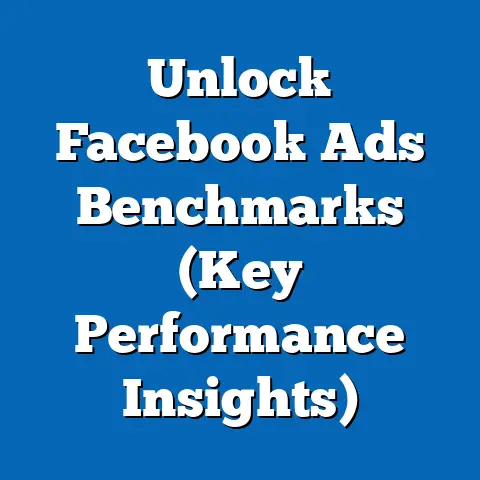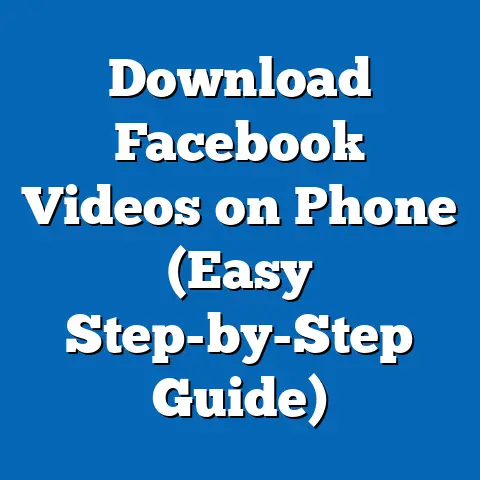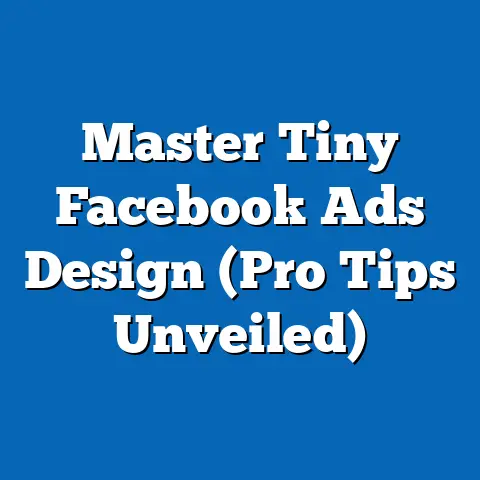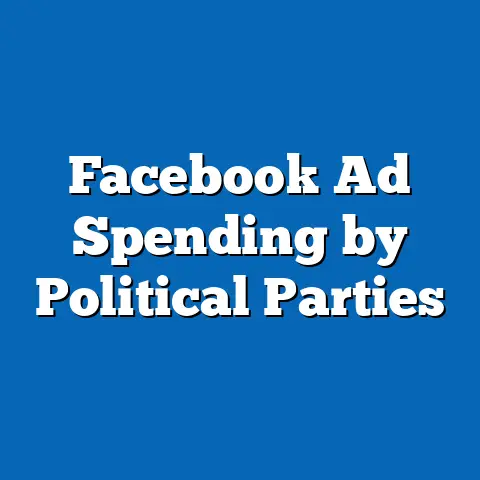Unlock Creative Facebook Ads Tips (Game-Changing Strategies)
Ever feel like your Facebook ads are shouting into a void? I know I have. There I was, staring at my laptop screen, frustration mounting as I watched my meticulously crafted campaign fizzle out. Hours of research, careful targeting, and what I thought was compelling copy… all for naught. The feeling is akin to throwing a party and nobody showing up. It’s deflating, to say the least.
In today’s digital landscape, where attention spans are shorter than ever and the competition is fiercer than a Black Friday sale, simply having a presence on Facebook isn’t enough. You need to command attention. You need to create ads that not only grab eyeballs but also forge genuine connections with your audience. You need to think outside the box, embrace creativity, and understand the psychology that drives consumer behavior.
That’s why I’ve put together this guide. It’s not just another list of generic tips and tricks. It’s a deep dive into game-changing strategies that can help you unlock the true potential of Facebook advertising. We’ll explore everything from the psychology of advertising to leveraging user-generated content, crafting compelling copy, and harnessing the power of video.
So, buckle up, fellow marketers, because we’re about to embark on a journey to transform your Facebook ads from bland to brilliant!
1. Understanding the Landscape of Facebook Ads
Facebook advertising has come a long way since its humble beginnings. What started as simple banner ads has evolved into a sophisticated platform with a vast array of targeting options, ad formats, and creative possibilities. But with this evolution comes increased competition.
Did you know? As of 2023, Facebook boasts over 2.9 billion monthly active users. That’s a massive audience, but it also means your ads are competing with countless other messages, posts, and distractions.
Standing out in this crowded marketplace requires more than just a well-designed graphic and a catchy headline. It demands a deep understanding of your target audience, a creative approach to messaging, and a willingness to experiment with different ad formats.
The key takeaway here is that Facebook advertising is not a “set it and forget it” endeavor. It’s a dynamic process that requires constant monitoring, optimization, and a relentless pursuit of creative excellence.
2. The Psychology of Advertising
Advertising, at its core, is about understanding human behavior. It’s about tapping into our emotions, desires, and motivations to influence our decisions. To create truly effective Facebook ads, you need to become a bit of a psychologist.
Think about the last time you made a purchase. What drove your decision? Was it a rational assessment of the product’s features and benefits, or was it something more emotional? Chances are, it was a combination of both.
Emotions play a powerful role in consumer behavior. Fear, joy, sadness, anger – these are all emotions that can be leveraged in advertising to create a connection with your audience and drive them to take action.
For example:
- Fear: Security companies often use fear to promote their products, highlighting the dangers of home invasion and the peace of mind that their systems provide.
- Joy: Brands selling travel experiences often focus on the joy and excitement of exploring new places, creating a sense of wanderlust and inspiring people to book their next vacation.
- Belonging: Many brands use the power of community and belonging to connect with their target audience. Think about Harley-Davidson, they don’t just sell motorbikes, they sell a lifestyle and a sense of belonging to a community of like-minded riders.
To effectively tap into emotional responses, you need to understand your target audience’s feelings and motivations. What are their pain points? What are their aspirations? What are their values? Once you have a clear understanding of these factors, you can craft ads that resonate with them on a deeper level.
My Experience: I once worked on a campaign for a local bakery. Instead of focusing solely on the deliciousness of their products, we crafted ads that told stories about the bakery’s role in the community. We featured photos of families enjoying birthday cakes, couples sharing romantic dinners, and friends gathering for coffee and pastries. The ads evoked feelings of warmth, nostalgia, and connection, and the bakery saw a significant increase in foot traffic and sales.
3. Creative Strategies for Eye-Catching Ads
In a sea of Facebook posts, cat videos, and political rants, your ads need to stand out. They need to be visually compelling, engaging, and memorable. Here are some creative strategies to help you achieve that:
Think Beyond the Stock Photo
Stock photos can be useful in a pinch, but they often lack authenticity and can feel generic. Instead of relying solely on stock photos, consider using original photography or illustrations. If you have a product, showcase it in real-life settings. If you’re promoting a service, feature your team members or happy customers.
Embrace Minimalism
Sometimes, less is more. A clean, uncluttered design with a strong focal point can be more effective than a busy, overwhelming graphic. Use white space strategically to draw attention to the key elements of your ad.
Tell a Story
Storytelling is a powerful way to connect with your audience and make your ads more memorable. Craft a narrative that resonates with their emotions and values. Show, don’t tell. Instead of simply stating the benefits of your product or service, tell a story that illustrates those benefits in action.
Use Motion
Motion graphics and animations can be incredibly eye-catching. They can add a dynamic element to your ads and help you capture attention in a crowded news feed. Consider using short, looping videos or animated GIFs to showcase your product or service in action.
Here’s a framework for crafting stories that resonate:
- Identify Your Hero: Who is the main character in your story? This should be someone your target audience can relate to.
- Define the Problem: What challenge or obstacle does your hero face? This should be a problem that your target audience also experiences.
- Introduce the Solution: How does your product or service help your hero overcome their challenge? This is where you showcase the benefits of your offering.
- Show the Transformation: What is the end result? How has your hero’s life improved as a result of using your product or service?
4. Leveraging User-Generated Content
User-generated content (UGC) is any content – text, images, videos, reviews – created by your customers or fans. It’s authentic, relatable, and incredibly powerful.
Why is UGC so effective?
- Trust: People are more likely to trust recommendations from other customers than they are from brands themselves.
- Engagement: UGC can spark conversations and build a sense of community around your brand.
- Cost-Effective: UGC can be a cost-effective way to create high-quality content for your ads.
How can you integrate UGC into your advertising strategies?
- Run Contests and Giveaways: Encourage customers to submit photos or videos showcasing your product or service. Offer prizes for the best submissions.
- Feature Customer Reviews: Highlight positive reviews in your ads to build trust and credibility.
- Share Customer Stories: Ask customers to share their experiences with your product or service. Turn these stories into compelling ad content.
- Repurpose Social Media Posts: If customers are already sharing photos or videos of your product on social media, ask for permission to use that content in your ads.
Case Study: GoPro is a master of UGC. They regularly feature videos and photos taken by their customers in their advertising campaigns. This not only showcases the versatility of their cameras but also builds a strong sense of community among their users.
Tip: When using UGC in your ads, always ask for permission from the content creator and give them credit.
5. Harnessing the Power of Video
Video is king in the digital world. It’s the most engaging type of content, and it’s incredibly effective at capturing attention and driving conversions.
Why are video ads so crucial?
- Attention-Grabbing: Videos stand out in the news feed and are more likely to grab attention than static images or text.
- Informative: Videos can convey a lot of information in a short amount of time.
- Emotional Connection: Videos can evoke emotions and create a deeper connection with your audience.
- Versatile: Videos can be used to showcase products, tell stories, provide tutorials, and more.
Types of Video Content:
- Testimonials: Feature happy customers sharing their experiences with your product or service.
- Behind-the-Scenes: Give your audience a glimpse into your company culture and operations.
- Tutorials: Show your audience how to use your product or service.
- Product Demos: Showcase the features and benefits of your product in action.
- Brand Stories: Tell a compelling story about your brand and its mission.
Practical Advice for Optimizing Video Ads:
- Keep it Short: Aim for videos that are 15-30 seconds long.
- Grab Attention Quickly: Start with a visually compelling hook that grabs attention in the first few seconds.
- Use Captions: Many people watch videos on Facebook with the sound off, so it’s important to use captions to convey your message.
- Optimize for Mobile: Make sure your videos are optimized for mobile viewing.
- Include a Clear Call to Action: Tell your audience what you want them to do after watching your video.
My Aha Moment: I remember when I first started experimenting with video ads. I was hesitant because I thought they were too expensive and time-consuming to produce. But I quickly realized that even a simple, well-produced video could have a huge impact on my campaign performance. I started creating short, behind-the-scenes videos of my team working on projects, and the engagement rates were through the roof!
6. Crafting Compelling Copy
Even the most visually stunning ad will fall flat if the copy is weak. Your ad copy needs to be clear, concise, and compelling. It needs to grab attention, pique interest, and drive action.
Key Elements of Compelling Ad Copy:
- Headline: Your headline is the first thing people will see, so it needs to be attention-grabbing. Use strong verbs, intriguing questions, or bold statements.
- Body Copy: Your body copy should expand on your headline and provide more details about your product or service. Focus on the benefits, not just the features.
- Call to Action: Your call to action (CTA) tells people what you want them to do next. Use clear, concise language, such as “Shop Now,” “Learn More,” or “Sign Up Today.”
- Emotional Triggers: Tap into your audience’s emotions by using words that evoke feelings of excitement, curiosity, or urgency.
Examples of High-Performing Ad Copy:
- “Tired of feeling tired? Our new energy drink will give you the boost you need to conquer your day! Shop Now and get 20% off your first order!” (This copy uses a relatable pain point, highlights the benefit of the product, and includes a clear call to action with a discount.)
- “Discover the secret to glowing skin! Our all-natural skincare line will leave you feeling refreshed and rejuvenated. Learn More and get a free sample!” (This copy uses intrigue, highlights the benefit of the product, and includes a clear call to action with a free offer.)
- “Don’t miss out! Our limited-time sale ends tonight! Shop Now and save up to 50% on all your favorite items!” (This copy creates a sense of urgency and encourages immediate action.)
Tip: Use A/B testing to experiment with different headlines, body copy, and CTAs to see what resonates best with your audience.
7. A/B Testing for Creative Optimization
A/B testing, also known as split testing, is the process of comparing two versions of an ad to see which one performs better. It’s a crucial tool for refining your ad creativity and maximizing your ROI.
Why is A/B testing so important?
- Data-Driven Decisions: A/B testing allows you to make data-driven decisions about your ad creative, rather than relying on guesswork.
- Improved Performance: By identifying the elements that resonate best with your audience, you can improve your ad performance and drive more conversions.
- Continuous Optimization: A/B testing is an ongoing process that allows you to continuously optimize your ads and stay ahead of the competition.
Best Practices for Setting Up Effective A/B Tests:
- Test One Element at a Time: To get accurate results, only test one element at a time. For example, test different headlines, images, or CTAs.
- Use a Control Group: Create a control group that sees the original version of your ad. This will serve as a benchmark for comparison.
- Run Your Tests Long Enough: Make sure to run your tests long enough to gather statistically significant data.
- Analyze Your Results: Carefully analyze your results to identify which version of your ad performed better.
- Implement Your Findings: Implement your findings by using the winning version of your ad in your campaigns.
How to Analyze Results:
- Look at Key Metrics: Focus on key metrics such as click-through rate (CTR), conversion rate, and cost per acquisition (CPA).
- Identify Patterns: Look for patterns in your data. For example, did a certain type of headline perform better across multiple ads?
- Draw Conclusions: Draw conclusions based on your data. What did you learn from your A/B tests?
- Document Your Findings: Document your findings so you can refer back to them in the future.
My Biggest Lesson: I used to be hesitant to A/B test because I thought it was too time-consuming. But I quickly learned that even a few simple tests could have a huge impact on my campaign performance. One time, I tested two different headlines for an ad, and the winning headline increased my click-through rate by 50%!
8. Leveraging Facebook Ad Tools and Features
Facebook offers a wealth of tools and features that can help you enhance your ad creativity and reach your target audience. Here are some of the most useful:
- Carousel Ads: Carousel ads allow you to showcase multiple images or videos in a single ad unit. This is a great way to showcase a variety of products, tell a story, or highlight different features of a single product.
- Collection Ads: Collection ads are designed to showcase products in a visually appealing way. They feature a hero image or video at the top, followed by a grid of related products.
- Instant Experiences (formerly Canvas Ads): Instant Experiences are full-screen, mobile-optimized ads that load instantly. They’re a great way to create immersive experiences and tell compelling brand stories.
- Dynamic Ads: Dynamic ads allow you to automatically show the right products to the right people based on their browsing behavior on your website or app.
- Audience Insights: Audience Insights provide valuable data about your target audience, including their demographics, interests, and behaviors.
- Custom Audiences: Custom Audiences allow you to target people who have already interacted with your business, such as website visitors, email subscribers, or app users.
- Lookalike Audiences: Lookalike Audiences allow you to target people who are similar to your existing customers.
Staying Up-to-Date:
Facebook is constantly rolling out new features and updates, so it’s important to stay up-to-date on the latest trends. Follow the Facebook Business blog, attend webinars, and join online communities to stay informed.
My Favorite Tool: I’m a huge fan of Dynamic Ads. They’ve been a game-changer for my e-commerce clients. By automatically showing the right products to the right people, we’ve been able to significantly increase conversion rates and ROI.
9. Real-World Examples of Creative Success
Let’s take a look at some real-world examples of brands that have successfully implemented game-changing strategies in their Facebook ads:
- Dollar Shave Club: Dollar Shave Club’s viral video ad was a masterpiece of humor and simplicity. It showcased the brand’s value proposition in a memorable and entertaining way.
- Old Spice: Old Spice’s “The Man Your Man Could Smell Like” campaign was a brilliant example of using humor and personality to connect with a target audience.
- Airbnb: Airbnb’s “Live There” campaign focused on telling stories about unique travel experiences, creating a sense of wanderlust and inspiring people to book their next adventure.
- Dove: Dove’s “Real Beauty” campaign challenged traditional beauty standards and celebrated the diversity of women, creating a powerful emotional connection with their audience.
Lessons Learned:
- Be Authentic: Be true to your brand and your values.
- Be Creative: Don’t be afraid to experiment with different ad formats and messaging.
- Know Your Audience: Understand your target audience’s needs, desires, and motivations.
- Tell a Story: Craft a narrative that resonates with your audience’s emotions and values.
- Measure Your Results: Track your results and make adjustments as needed.
Challenge Yourself:
Think about how you can apply these insights to your own challenges. What can you do to make your ads more authentic, creative, and engaging? How can you better understand your target audience and tell stories that resonate with them?
10. Conclusion
In the ever-evolving world of Facebook advertising, creativity is no longer optional – it’s essential. To stand out from the crowd and connect with your audience on a deeper level, you need to embrace innovative strategies, understand the psychology of advertising, and leverage the tools and features that Facebook provides.
Remember, it’s not enough to simply create visually appealing ads. You need to craft compelling copy, tell engaging stories, and build a sense of community around your brand. And don’t be afraid to experiment, test, and iterate. The key to success is to continuously learn and adapt to the changing landscape.
So, go forth, fellow marketers, and unleash your creative potential! Experiment with the strategies outlined in this guide, share your own stories of success and creativity, and let’s transform the world of Facebook advertising, one brilliant ad at a time!
I challenge you to take action today. Pick one strategy from this guide and implement it in your next Facebook ad campaign. Share your results with me – I’d love to hear about your success! Let’s continue to learn and grow together as we navigate the exciting world of Facebook advertising.

